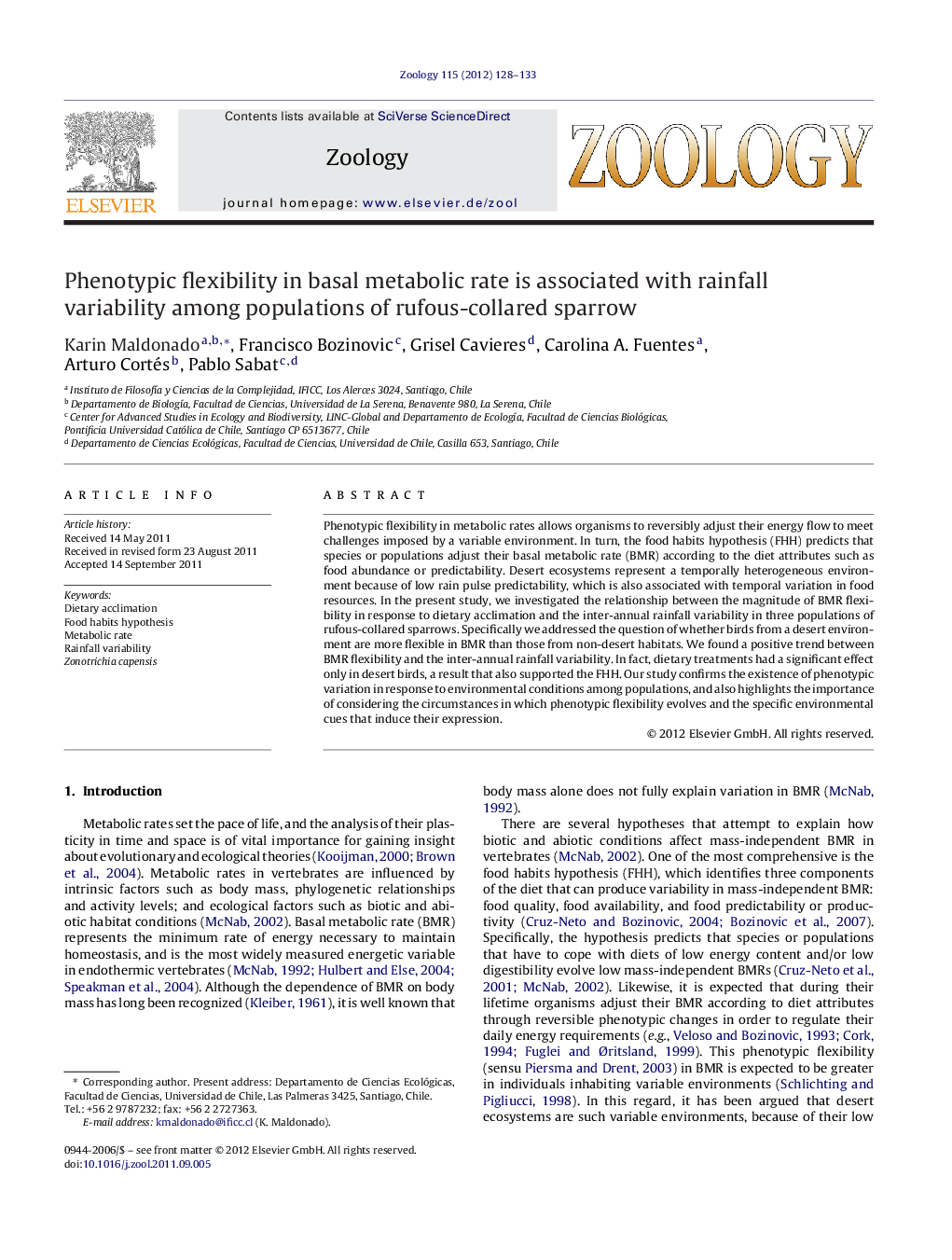| Article ID | Journal | Published Year | Pages | File Type |
|---|---|---|---|---|
| 2791042 | Zoology | 2012 | 6 Pages |
Phenotypic flexibility in metabolic rates allows organisms to reversibly adjust their energy flow to meet challenges imposed by a variable environment. In turn, the food habits hypothesis (FHH) predicts that species or populations adjust their basal metabolic rate (BMR) according to the diet attributes such as food abundance or predictability. Desert ecosystems represent a temporally heterogeneous environment because of low rain pulse predictability, which is also associated with temporal variation in food resources. In the present study, we investigated the relationship between the magnitude of BMR flexibility in response to dietary acclimation and the inter-annual rainfall variability in three populations of rufous-collared sparrows. Specifically we addressed the question of whether birds from a desert environment are more flexible in BMR than those from non-desert habitats. We found a positive trend between BMR flexibility and the inter-annual rainfall variability. In fact, dietary treatments had a significant effect only in desert birds, a result that also supported the FHH. Our study confirms the existence of phenotypic variation in response to environmental conditions among populations, and also highlights the importance of considering the circumstances in which phenotypic flexibility evolves and the specific environmental cues that induce their expression.
